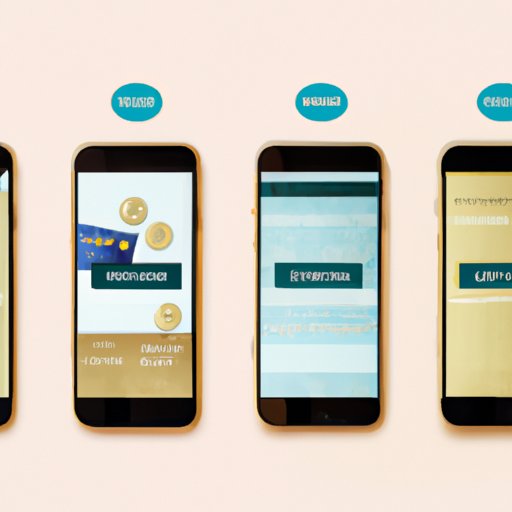
I. Introduction
One of the most common challenges in our daily lives involves sending money to friends, family, or other entities. From making international transactions to simple daily transfers, sending money requires careful consideration of cost, speed, security, and convenience. This article offers a comprehensive guide on the different methods of sending money and how to leverage these options to fit your specific needs.
II. Using Online Money Transfer Services
Online money transfer services provide a secure and easy-to-use method for sending money. Services such as PayPal, Skrill, and TransferWise offer a range of payment options, including bank account transfers and credit card payments. Benefits of these services include fast transaction processing, low fees, and competitive exchange rates for international transactions. To use these services, simply create an account, link your bank account or credit card, and specify the recipient’s details. Online money transfer services are most useful when sending low or moderate amounts of money to recipients with bank accounts or credit cards.
III. Banking Options
Banks offer several options for sending money, including wire transfers, ACH transfers, and online bill payments. Wire transfers involve transferring money directly from one bank account to another, often for a higher fee than other options, making them best suited for large or urgent transfers. ACH transfers, on the other hand, offer a slower but more affordable option for transferring money between bank accounts. Online bill payments provide a convenient option for paying bills, transferring money to other individuals or businesses, and scheduling future payments. The best method for each transaction will depend on several factors, including transaction size, timing, destination, and cost.
IV. Cash Transfer
Cash transfer services such as Western Union, MoneyGram, and XOOM offer reliable and easy-to-use options for sending money in cash. These services are available in a variety of locations, include banks, grocery stores, and gas stations. Although cash transfer services tend to have higher fees than online services, they provide a useful option when sending money to individuals without a bank account or where cash is preferred, such as in emergencies. It is important to note any limitations or disadvantages associated with these services, such as higher transaction fees or the risk of scams.
V. Cryptocurrencies
Cryptocurrencies such as Bitcoin and Ethereum can be used as an alternative payment method for sending money. These currencies are decentralized, meaning they are not controlled by any government or financial institution. Cryptocurrency transactions often involve a lower fee than traditional options, and they facilitate fast and secure international transactions. Before using cryptocurrency, it is important to research the specific currency, as well as understand the technicalities of wallets and exchanges.
VI. Mobile Payments
Mobile payment services such as Google Wallet, Apple Pay, and Venmo provide convenience and flexibility to send money from a smartphone or tablet. These services work by linking your bank account or credit card to a mobile app, allowing you to send money directly to another user’s account. Mobile payments are useful for sending small amounts of money instantly or for making in-person payments. To use these services, simply download the app, set up an account, and link your payment method. As with other payment options, it is important to practice safety and security by using strong passwords and verifying transactions before submitting them.
VII. Bank Checks
Bank checks provide a secure option for sending large sums of money or making cross-border transactions. These checks are issued by banks and can be purchased for a fee, which may vary depending on the bank and the value of the check. Writing and sending a bank check requires specific details, including the recipient’s bank information and the transaction amount. Bank checks can take several business days to clear, so it is important to consider the timing and urgency of each transaction carefully.
VIII. Prepaid Debit Cards
Prepaid debit cards offer a convenient option for sending small amounts of money or facilitating online purchases. These cards can be purchased at a variety of locations, including grocery stores and online retailers. To use a prepaid debit card, simply load funds onto the card and use it to make purchases or withdraw cash. Different types of prepaid debit cards offer different benefits and fees, so it is important to research and compare options before making a purchase.
IX. Conclusion
Sending money can seem like a daunting task, but there are many options available to fit your specific needs. From online money transfer services to cash transfer and prepaid debit cards, this article has provided a comprehensive guide for sending money safely and efficiently. Whatever method you choose, be sure to verify recipients’ details, practice safety and security measures, and research your options carefully to ensure a smooth and successful transaction.




